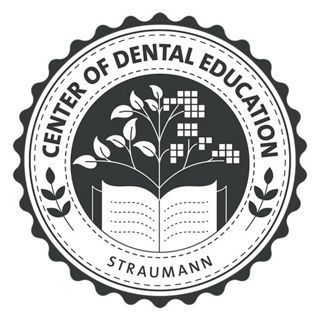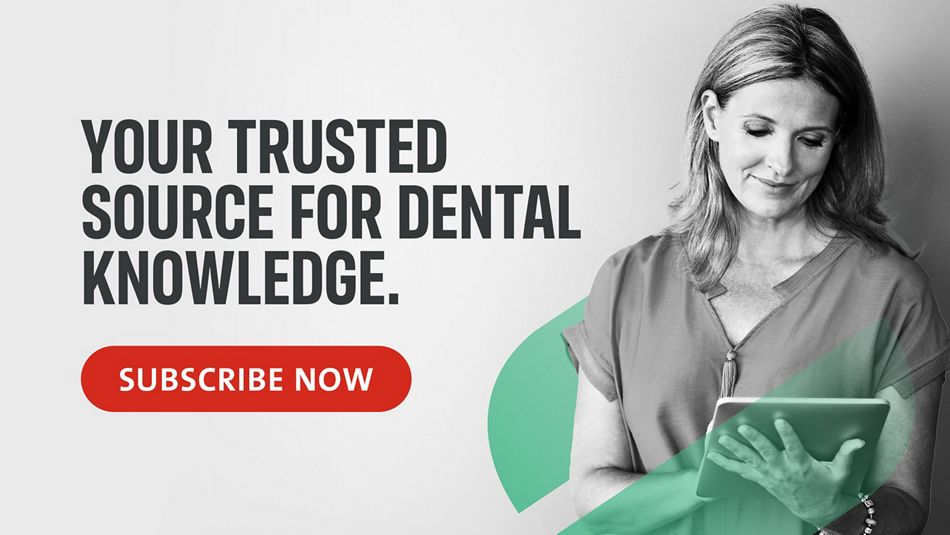Introduction
The following case report focuses on the rehabilitation of a 35-year-old male patient who presented with loose anterior teeth, a progressively widening diastema, and discomfort during eating. The patient desired a comprehensive solution to restore dental stability, improve oral function, and enhance his smile. His dental history included prior orthodontic treatment for an impacted canine, with no systemic conditions, smoking habits, or medication use influencing the treatment plan.
Restoration of the esthetic zone in a young patient is particularly challenging due to the high expectations for natural-looking results and the functional demands placed on the anterior teeth. In addition to esthetic considerations, these cases often involve compromised bone and soft tissue conditions, requiring precise surgical and prosthetic planning. Immediate treatment options in such scenarios provide a clear advantage by reducing treatment time, preserving soft tissue contours, and maintaining patient confidence during the rehabilitation process.
The use of Straumann® BLX implants was vital in addressing the complexity of this case. These implants offer optimal primary stability, even in situations with limited bone availability. Their design facilitates efficient osseointegration while supporting soft tissue health, making them a reliable choice for restoring the esthetic zone. The immediate placement approach minimized treatment duration and preserved the natural gingival architecture, contributing to an optimal esthetic outcome.
Guided bone regeneration (GBR) played a crucial role in the treatment due to the significant vertical and horizontal bone loss identified through radiographic assessment. Cerabone®, a deproteinized bovine bone substitute, was employed to fill the gaps and support the osseointegration of the implants. Known for its excellent biocompatibility and structural stability, Cerabone® helps preserve ridge volume and ensures long-term support for soft and hard tissues. Its slow resorption rate is particularly advantageous in the esthetic zone, where maintaining ridge contours is essential for achieving natural-looking results.
Following a thorough clinical evaluation and classification of the case as complex for surgery and advanced for prosthodontics under SAC criteria, a digital workflow was integrated into the treatment plan. This approach allowed for precise planning of implant placement and prosthetic design, ensuring a functional and esthetic restoration.
This report highlights the challenges of managing the esthetic zone in a young patient and the advantages of combining immediate implant placement, biomaterials, and digital technology. The integration of these elements highlights the potential to achieve stable, predictable, and natural-looking outcomes that meet both functional demands and the patient’s expectations.
Initial situation
A 35-year-old male patient presented with the chief complaint of loose front teeth and pain, especially while eating. He expressed the desire to achieve a stable dentition, improve function, and have a more esthetic smile. His dental history includes orthodontic treatment performed years ago due to an impacted canine. There were no reports of systemic diseases, smoking, or medication use.
The patient presented a low smile line with no signs of local inflammation. There was mobility grade II in the front teeth and a diastema centralis, which, according to the patient, has progressively widened over time (Fig. 1).
The radiographic evaluation showed loss of vertical and horizontal bone, as well as a thin buccal plate (Figs. 2-4).
Based on the SAC classification, the patient's surgical case was categorized as complex, while the prosthodontic status was classified as advanced (Fig. 5).
The prognosis of the remaining teeth, based on clinical and radiographic analysis, was poor. Extraction of hopeless teeth was necessary as part of the treatment plan.
Treatment planning
After discussing the treatment alternatives with the patient, including the advantages, disadvantages, risks, and complications, the decision was made to opt for:
1.Digital planning of a fixed immediate rehabilitation on three implants.
- Extraction of hopeless teeth #13, #12, #11, #21 and #22.
2.Immediate placement of three Straumann® BLX Roxolid® SLActive® implants in positions #13 (5.0 x 10 mm), #11 (3.75 x 12 mm), and #22 (4.5 x 10 mm).
3.Bone grafting with Cerabone® deproteinized bovine bone substitute.
4.Delivery of screw-retained temporary prosthesis.
5.Delivery of screw-retained definitive prosthesis.
Surgical procedure
Local anesthesia with lidocaine 2% with epinephrine 1:100,000 was administered. The hopeless teeth #13, #12, #11, #21, and #22 were extracted atraumatically. A mucoperiosteal flap with a crestal incision was made, and a surgical stent was positioned to guide implant-site preparation following the extractions. The implant beds were prepared using the Straumann® BLX Surgical Cassette following the manufacturer’s instructions (Fig. 6).
Immediate BLX Straumann® implants were placed in positions #13 (5.0 x 10 mm), #11 (3.75 x 10 mm), and #22 (4.5 x 10 mm) (Fig. 7). The gaps and sockets were carefully filled with Cerabone® deproteinized bovine bone substitute, small granules, to improve osseointegration and provide permanent structural support (Fig. 8). This bone substitute was selected for its excellent biocompatibility and its capacity to support soft tissue in the esthetic area, helping to preserve the shape of the ridge.
Prosthetic procedure
Digital impressions were taken using the Straumann® Virtuo Vivo™ intraoral scanner and a 5-unit bridge was digitally planned (Fig. 10). Additionally, an occlusal view of the virtually planned 5-unit bridge was generated to ensure precise alignment and esthetics (Fig. 11).
A temporary bridge was then fabricated using a milled resinous material on the Straumann® CARES® C series milling machine (Fig. 12). The screw-retained temporary bridge was then delivered to the patient, providing functional and esthetic restoration while supporting tissue healing and adaptation (Fig. 13).
At the six-month follow-up, healing was uneventful. The final restoration was also digitally planned (Fig. 14). The final screw-retained bridge was delivered, occlusion was checked, and instructions were given. The patient was very satisfied with the results (Fig. 15).
Treatment outcomes
Eighteen months after the definitive prosthesis was delivered, a clinical and radiographic evaluation was conducted to assess the stability and integration of the implants, as well as the condition of the surrounding bone and soft tissues. The findings revealed that the implants remained stable, the surrounding bone was healthy, and the integration of the prosthesis was satisfactory, indicating that the treatment was progressing as expected (Figs. 16,17).
At the 3-year follow-up, a clinical and radiographic evaluation was performed, confirming that the results remained stable over time, with no signs of complications (Figs. 18-21).
The patient expressed great satisfaction, stating, "I am very happy with the results. Now, I can smile and speak with confidence. I have also enjoyed eating again. My quality of life has really improved. Choosing treatment with dental implants has been the best decision I have been able to make."

A Center of Dental Education (CoDE) is part of a group of independent dental centers all over the world that offer excellence in oral healthcare by providing the most advanced treatment procedures based on the best available literature and the latest technology. CoDEs are where science meets practice in a real-world clinical environment.
Author’s testimonial (optional)
Rehabilitation in the anterior area of the maxilla becomes a challenge due to the esthetic and functional requirements. In cases with a complex esthetic and functional deficiency, proper planning is a priority. The precision and efficiency of the digital workflow enable accurate prosthetic design, implant position, and determine whether additional surgical procedures are required.

